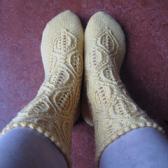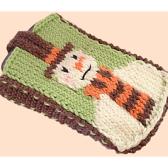Every day we see complete fails of Common Sense, stupid and fantastic examples of the horror that can occur when someone just… refuses… to think. Sometimes it’s a matter of hubris, people thinking that their over-inflated sense of self-importance can overcome the laws of physics. Other times it’s just a complete failure to take a moment to really think a thing through, and thus do something monumentally stupid.
Let’s take for example the USPS service letter that indicates if you can’t speak English, or fail to understand the letter, to take it to the local post office. How precisely would they know to do that? Or how about the woman who called the police to report that her ex was texting her, a fact she was able to ascertain because it was, and I quote, “In her handwriting.”
Use your common sense day was established by Bud Bilanich, a career mentor with a reputation for focusing of being “The Common Sense Guy.” He’s been featured on some of the most prominent TV stations and magazines, and has written 19 books that emphasize how to succeed at your life, and how the application of common sense is absolutely vital to that success.
Common Sense as a concept is ancient, first being codified by Aristotle in describing the raw analysis of the animal mind of the five specialized sense perceptions. This was then carried forward in the Roman interpretation, which presents the concept as ideas and perceptions held by the common man. A sense of the common. Through a long and twisty development, and through many future interpretations, common sense has come to be the knowledge of simple, sensible things… Like not putting your iPhone in the microwave to recharge it.
The simplest way of celebrating Use Your Common Sense Day is to simply do what’s on the tin. Namely, use your common sense! Take a little more time to stop and consider your options before acting on impulse. Before you decide that something is a good idea, be sure to stop, take a breath, and look it over and make sure you aren’t about to become an object lesson.

Word of the Day
| |||
| Definition: | (noun) A sermon, especially one intended to edify a congregation on a practical matter and not intended to be a theological discourse. | ||
| Synonyms: | preachment | ||
| Usage: | The priest addressed a hasty homily to the pair on the perils of life, on the duties they must, some day, inculcate upon their children. | ||
Idiom of the Day
History
Guido Reni (1575)
| Reni was an Italian painter and engraver whose style was influenced by his rival, Caravaggio. Reni was apprenticed to Flemish painter Denis Calvaert as a boy and by 23 had been commissioned by the government to execute decorative frescoes for the facade of the Palazzo Pubblico. Shortly thereafter, he made the first of his many trips to Rome, where he executed many important commissions, including the celebrated ceiling fresco Aurora. |
Tonga National Day
Located in the Pacific Ocean some 1,250 miles north of New Zealand, the island nation of Tonga consists of about 150 islands, 36 of which are inhabited. With a population of about 120,000, Tonga is ruled by a royal family that goes back to 1831. On November 4, 1875, King George Tupou I gave his consent to the constitution of the new nation of Tonga. Celebrated for many years as Tonga Constitution Day, the holiday was renamed by the government in 2006 as Tonga National Day and pronounced as an occasion to celebrate the country's heritage as a whole.
How NASA Has the Tools to 'Sniff' Out Life on Mars
A team of NASA researchers have developed a "sniffer" with "a nose for certain molecules."
READ MORE:
How NASA has the tools to 'sniff' out life on Mars
1846 - A patent for an artificial leg was granted to Benjamin Palmer.
1847 - Scottish obstetrician James Young Simpson discovered the anethestic qualities of chloroform.
1880 - James and John Ritty patented the first cash register.
1922 - In Egypt, Howard Carter discovered the entry of the lost tomb of Pharaoh Tutankhamun.
1924 - Nellie T. Ross of Wyoming was elected America's first woman governor so she could serve out the remaining term of her late husband, William B. Ross.
1939 - At the 40th National Automobile Show the first air-conditioned car was put on display.
1991 - Ronald Reagan opened his presidential library in Simi Valley, CA. The dedication ceremony was attended by President Bush and former U.S. presidents Jimmy Carter, Gerald R. Ford and Richard M. Nixon. It was the 1st gathering of 5 U.S. chief executives.
1999 - Cristina Saralegui received a star on the Hollywood Walk of Fame.
DAILY SQU-EEK
READER'S INFO
a celebration of DIY spirit
FREE - you are encouraged to walk, bike, or take public transportation to the Fair.
CHRISTMAS VILLAGE FESTIVAL - Birmingham, Alabama
Nov 5 - 8, 10 am - 8pm
and
Nov 6, 12 noon - 5 pm
Held annually at the Birmingham Jefferson Convention Complex, Christmas Village Festival is an Alabama tradition with deep roots not only in Alabama hearts, but in the hearts of customers all across the United States. Mothers and daughters, sisters, and friends begin their holiday shopping by meeting in Birmingham the first weekend in November to enjoy an amazing variety of gift ideas - all under one roof. While some shoppers make a day or it, others have decided that one day is just not enough time to take in the unique sampling of arts, crafts, gifts and food Christmas Village Festival
purchase tickets: cvfest
Pictures of the day

Midsummer Eve Bonfire on Skagen Beach is a 1906 painting by P.S. Krøyer. The large work, which took several years to complete, shows many of the artists in the group known as the Skagen Painters as well as influential members of Skagen's local community. Although Krøyer was not satisfied with the work, considering it too dark, the painting is now viewed as one of the most important in the Skagens Museum collection.

knit, christmas
knit
knit
thanks, june
thanks, june
knit
knit, christmas
thanks, susan b.
Mary Clancy goes up to Father O'Grady after his Sunday
morning service, and she's in tears.
He says, "So what's bothering you, Mary my dear?"
She says, "Oh, Father, I've got terrible news. My
husband passed away last night."
The priest says, "Oh, Mary, that's terrible. Tell me, Mary,
did he have any last requests?"
She says, "That he did, Father."
The priest says, "What did he ask, Mary? "
She says, He said, 'Please Mary, put down that damn gun...'
crochet, christmas
crochet
crochet
thanks, clara
crochet
crochet, christmas gift giving


Modifications:
I've removed the last two rounds of the graphic and added the following three ones in green.
Abbreviations:
ch/s: chain
sp st: slip stitch
sc: single crochet stitch
dc: double crochet stitch
3-dc-tog: 3 dc closed together
rnd: round
Round 1: Insert the hook under any arc of chains to take a loop, ch 1 and make 1 sc; ch 5 + make 1 sc in the same arc of chs. *Ch 5; in the next arc of chs, make: 1 sc + ch 5 + 1 sc*; repeat ** until the end of the rnd. Ch 5 and make 1 sl st in the first sc of the rnd to close it.
Round 2: Make 1 sl st to begin this rnd in the first arc of chs of previous rnd. Ch 2 (counted as first dc in the first 3-dc-tog), end this first 3-dc-tog. Ch 3, make 1 sc in the next arc of chs and ch 3. *Make one 3-dc-tog in the next arc of chs; ch 3 + 1 sc in the next arc of chs and ch 3*; repeat ** until the end of the rnd. Join to the first st of the rnd with 1 sl st.
Round 3: Ch 1 + 1 sc + ch 3 + 1 sc in the first 3-dc-tog of previous rnd; ch 5. *Make 1 sc + ch 3 + 1 sc in the next 3-dc-tog; ch 5*; repeat ** until the end of the rnd. Join to the first stitch of this rnd with 1 sl st. Fasten off.
Round 2: Make 1 sl st to begin this rnd in the first arc of chs of previous rnd. Ch 2 (counted as first dc in the first 3-dc-tog), end this first 3-dc-tog. Ch 3, make 1 sc in the next arc of chs and ch 3. *Make one 3-dc-tog in the next arc of chs; ch 3 + 1 sc in the next arc of chs and ch 3*; repeat ** until the end of the rnd. Join to the first st of the rnd with 1 sl st.
Round 3: Ch 1 + 1 sc + ch 3 + 1 sc in the first 3-dc-tog of previous rnd; ch 5. *Make 1 sc + ch 3 + 1 sc in the next 3-dc-tog; ch 5*; repeat ** until the end of the rnd. Join to the first stitch of this rnd with 1 sl st. Fasten off.

RECIPE

CROCKPOT RECIPE
SWEETS
ADULT COLORING


CRAFTS
thanks, joan
thanks, joan
Make a Decorative Leaf Mobile
by Rachel Mae Smith
What you'll need:- Leaves
- Spray Paint
- Scissors
- Thread/Embroidery Floss
- Branch
- Scissors
- Thread/Embroidery Floss
- Branch
If your leaves are still green, I recommend pressing them (in between two sheets on paper towels in a heavy book) for 1 week before painting. The edges will still curl a bit after you hang them and pressing just ensures they curl less.
I found that hanging the leaves at different heights made the mobile a bit more interesting. You could also mix and match leaves from different trees or embellish your branch to make it really pop.

CHILDREN'S CORNER .... game
CAN YOU SPOT THE DIFFERENCES? (8)
PUZZLE

QUOTE
thanks, patty


CLEVER
thanks, helen

EYE OPENER
The Terrible Knitters of Dent
rovingcrafters
They don’t look very terrible. Not to me. To me they look like two elderly ladies that could put down their needles and cook up a heart country meal if you needed them to. And, if they were from Dent, they might not need to put down the needles at all and they could still get dinner fixed.
The Terrible Knitters of Dent knit very, very fast with knit sheaths and their stories are a distraction because I can’t not read them. I love the history of knitting and textiles. Its a passion. Let’s get oriented. Dent is a village in Cumbria on the western slopes of the Pennines within the Yorkshire Dales National Park. Yeah that doesn’t mean much to me either. Its here:
The knitters of Dent are famed for their speed, the quality of their work, and for the fact that they knit all the time. In a time when most of the rural working class knitted to supplement the family income, the people of Dent, men and women, were kicking ass. In the nearby towns was a flourishing trade for knitted goods. Suppliers of wool would travel to the nearby villages to deliver their “bumps” of wool and return with carts of stockings, caps, gloves, and sweaters.
The trade peaked during the Napoleonic wars, when the Crown needed more knitted goods for their marching armies then could be supplied. The knitters of Dent were known for being more productive than anywhere else in Northern England. Knitting schools to teach children, which had been located in the bigger towns of York, were relocated to Dent. Its from one of those children that the term Terrible Knitters of Dent comes from.
Where the “Terrible” Comes From
“The True Story of the Terrible Knitters e’ Dent” is recorded in The Doctor, by Robert Southe. Betty Yewdale and her sister were sent to learn knitting in Dent and they hated it. Betty hated the experience so much that she was still telling her tale and complaining when Robert South ran into her decades later. In these schools, children stayed in local cottages and were put to work knitting. The knitting was non-stop, from when you were woken before dawn to long after dark. If you didn’t knit enough, you didn’t get supper. When you did get your supper, the food was awful because… well I didn’t understand that part but there is some detailed complaining about how those people of Dent don’t cook things properly.
To put the children to work, the man of the house would wind up the bumps of yarn into three or four strand balls. Each child would work from one strand. If a child knitted slower (then the rest) she/he messed up the ball, and messed up the other children. That earned the child a beating, at least according to Betty.
Betty does say that before her and her sister ran away, she had gotten fast enough to knit a stocking in six hours. But that achievement didn’t make up for the rest and so Betty made a break for it one night. The rest of the tale is about which houses they stopped at, what food they were given to eat, and if the woman of the house let them have sugar with their tea. Its a very boring read.
Thus the title Terrible Knitters was born (from the tale in the book) and those stitches in Dent embraced it. They seem to be an impertinent and cheeky sort of people. To this day the village is renown for its knitters, for Adam Sedgewick (a local son who went off to university and became a geologist), and how they dealt with a vampire back in 1715.
(You want to know about that vampire don’t you? Okay. George Hodgeson was a good man who died. They buried him. Then he was seen doing all sorts of strange things, like turning himself into a black rabbit and drinking sheep’s blood. So they dug him back up. The town decided that he looked too healthy and pink and his hair was longer than it had been at the time of burial. So they drove a brass stake through his chest and reburied him under the church door. George was never seen again. Problem solved.)
How To Knit Terrible
They used knit sheaths or belts to hold the right handed needle supported at their waist. If they were knitting on the go, they carried their yarn on their belt as well in a “clue” holder.
Not only could the knitters work faster this semi rigid way, the tension they produced was tighter and the work more even than by the modern English way of handknitting.
The needles were slightly bent and blunt-tipped. I’ve read in several places that this bend, the curve in the needle, was something that happened over time. But, Aaron on A Fisherman Knits makes a good argument that is was deliberate and needles were bent to a precise angle. There is also an old and very poorly documented tradition of knitting with curved needles, particularly sock knitting. So I’m inclined to believe that bent needles are a purposeful, precision tool and not a sign of over use.
Not only could they get very fast this way but they could make very fine things. The Dent Knitters had a distinctive style of two-color stranded knitting, aka Fair Isle knitting, that showed up in their gloves.
That book shown above has been recently re-printed and is the best source for information on Dent knitting. Its The Old Hand-Knitters of the Dales, by Marie Hartley and Joan Ingilby. Be sure to give it a look. Marie Hartley has been tracking down tales of the Terrible Knitters for years. She found one, a rather tragic tale, and published it in an issue of Knit Edge in 2013 and later re-printed it on her blog. You can find the whole story there.
Margaret Thwaite was a young Dent knitter woman caring for her mentally ill mother in a small cottage. Her father and the rest of the children lived separately in Pontefract. Margaret was probably genetically inclined to develop mental illness and the stress of caring for her mother alone did her in. She was incarcerated at The Retreat in York, an asylum. She was admitted briefly in 1836 and then for the remainder of her life in 1838. The longevity of that life, Margaret lived to be 85, speaks to the quality of care at that facility. It was very progressive and believed in gentle handling of the mentally ill. They encouraged patients to craft, particularly needlework, as a form of early occupational therapy. Margaret’s medical records, faithfully reproduced by the article’s author, include multiple references to the confused and hopeless quality of Margaret’s knitting as an indicator of her mental health. The doctors didn’t seem to understand her attempts to improvise a knit sheath, but they did make note of her endlessly playing with string, making a stitch and then undoing, and crating nothing but tangles with her needles.
But Margaret never gave up knitting, or trying to knit.
She still knits away with a piece of string and pieces of wool and needles producing only a tangle – if she cannot get anything to employ herself in this manner with she rubs her hands together all day long till she rubs the skin off then she rubs away at the sore…
– from “Playing With A Piece Of String” – The Story of a Dentdale Knitter in ‘The Retreat’ Asylum, York
Which is pretty much what I’d expect from a knitter that was locked away for decade after decade in a mental asylum.









No comments:
Post a Comment